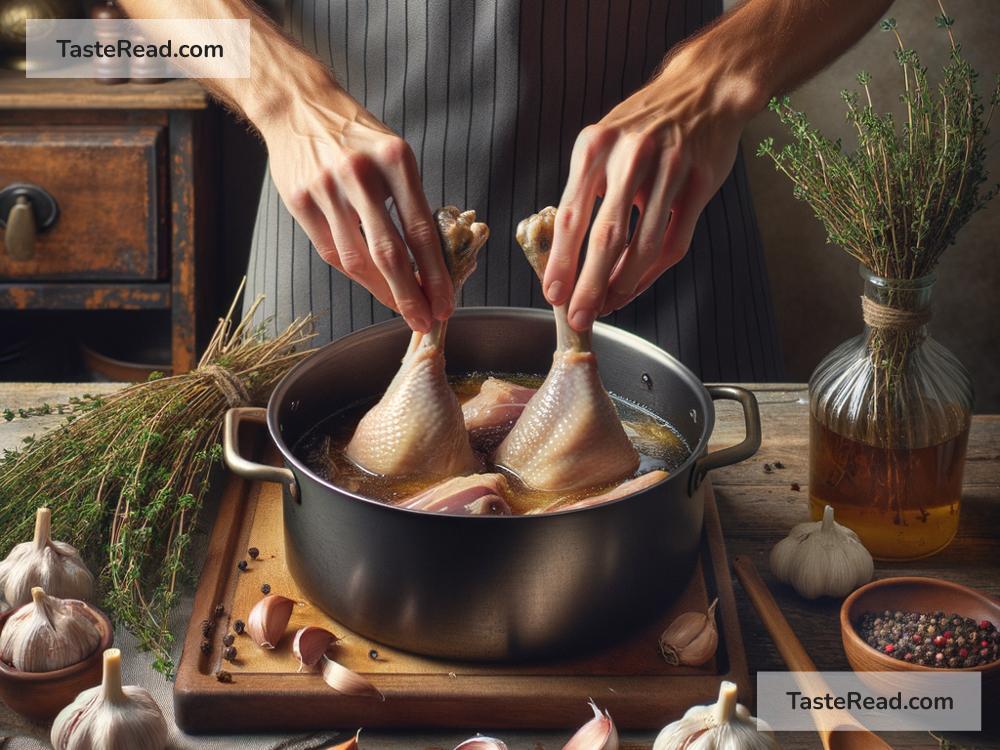Mastering Confit Techniques for Tender Meats and Vegetables
Confit is a time-honored French cooking method that transforms meats and vegetables into incredibly tender, flavorful delights. While it sounds fancy, mastering confit techniques is not as complicated as it seems and can elevate your home cooking to a new level. Let’s explore how you can use confit methods to create mouth-watering dishes, whether you’re an avid home cook or someone just starting to experiment in the kitchen.
What is Confit?
The word “confit” comes from the French verb “confire,” which means “to preserve.” Traditionally, confit involves slowly cooking a food in a substance for both flavor and preservation. For meat, this substance is usually its own fat, whereas for vegetables, it can be oil or a sugar syrup.
The Secret to Tender Meats: The Confit Method
Meats like duck legs, chicken, or pork belly are prime candidates for confit. The magic happens when the meat is slowly cooked at a low temperature in fat. This method coaxes the meat to become remarkably tender, falling off the bone, with a rich, deep flavor profile that is incomparable to other cooking methods.
- Preparation: Start by seasoning your meat well. For duck or chicken, salt, pepper, and herbs like thyme and garlic work wonders, creating layers of flavor.
- Submerge in Fat: Place the meat in a pot and pour enough fat (duck fat for duck, chicken fat for chicken, etc.) to completely cover it. The idea is to cook the meat in an environment that’s moisture-rich, without it actually being in water.
- Slow Cooking: The key to confit is cooking at a low temperature, generally around 200-225°F (93-107°C), for several hours. This slow process guarantees that the meat cooks gently, becoming impeccably tender without overcooking.
- Rest and Store: Once cooked, let the meat cool in the fat. This step is crucial as it allows the meat to absorb flavors and become even more succulent. You can store the meat, submerged in the fat, in the refrigerator for several weeks, making confit a fantastic preservation method.
Elevating Vegetables with Confit
Vegetables aren’t left out of the confit party. Cooking vegetables like garlic, tomatoes, or potatoes in oil transforms their texture and exponentially increases their flavor. The technique is similar to meat confit but usually takes less time.
- Choose Your Oil: While you can use various oils, olive oil works beautifully for most vegetables, imparting a fruity note.
- Low and Slow: Just like with meat, the vegetables should be submerged in oil and cooked at a low temperature. This method does wonders for garlic, turning it creamy and spreadable, perfect for adding to recipes or smearing on a piece of toast.
- Seasoning: Don’t forget to season your oil. Adding herbs and spices can infuse the vegetables with additional layers of flavor. Imagine cherry tomatoes confited with basil and garlic – simply divine.
Why Confit?
You might wonder why to go through the process of confiting when there are quicker cooking methods available. The answer lies in the texture and depth of flavor confit introduces to food, which is hard to achieve with any other method. Meat becomes more tender than you ever thought possible, and vegetables develop a richness and complexity that’s unbeatable.
Tips for Successful Confit
- Temperature Control: Maintaining a low, consistent temperature is key. Use a thermometer to monitor the oil or fat temperature during cooking.
- Quality Ingredients: Since confit intensifies flavors, use the best quality meat, vegetables, and fat or oil you can find.
- Patience Pays: Confit is not a quick process. Allow plenty of time for the food to cook gently and absorb flavors fully.
Conclusion
Confit might seem like a cooking technique shrouded in mystery, but it’s really about simplicity and patience. Whether you’re looking to transform duck legs into a fall-off-the-bone feast or elevate humble garlic cloves into a creamy, flavorful spread, confit is your answer. With the basic principles of low temperature, quality fat or oil, and seasoning, you can master the art of confit and bring a touch of French culinary tradition into your kitchen. So, why not give it a try and discover the incredible tenderness and flavor confit can bring to your meals?


